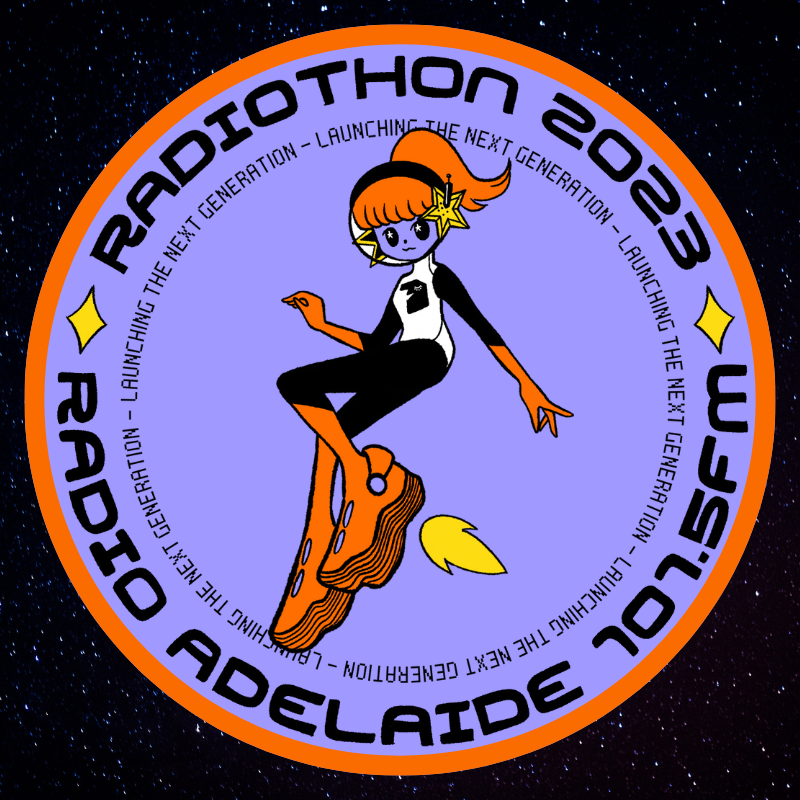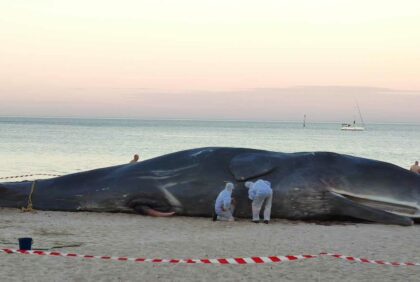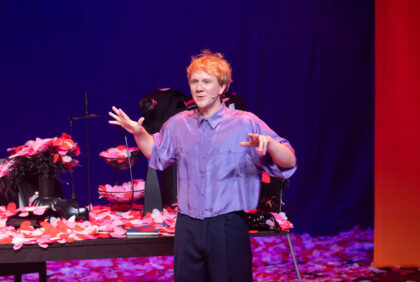Review: The Magic Flute
Posted on: Fri 15 Mar 2019

Adelaide Festival, ‘The Magic Flute’ 2 March 2019
It’s not just the flute, the whole of this production of Mozart’s opera is magical. Directed by Barrie Kosky and Suzanne Andrade, with animation by Paul Barritt, it is courageous, very funny, tender and witty. Melbourne–born Kosky directed the 1996 Adelaide Festival, the youngest director ever to take the job. In 2012 he was appointed artistic director and intendant of the Berlin Komische Oper, and The Magic Flute, his first production for the company, premiered the same year. It has since been seen in many places around the world.
It’s basically a love story in which the two lovers, Pamina and Tamino, must undergo three trials to be together, and Papageno, a bird catcher, who pines for love and is finally satisfied. The backdrop is a white wall that is a screen for all-important projections, with barely-perceived doors at various height and places , the cast appearing and disappearing, standing on small platforms, skilfully lit, as well as on the stage beneath. The complex plot is made easily accessible by the recitatives being turned into silent film intertexts in large letters on the backdrop as well as by surtitles translating the libretto.
Andrade and Barritt are from 1927, the title being the year of the first talkie, The Jazz Singer. This English company combines film, animation and live performance and The Magic Flute is a tribute to 1920s black and white film as much it is a 21st century opera production. Pamina is a Louise Brooks lookalike, Tamino is a matinee idol in a dinner suit, Papageno is Buster Keaton’s twin. But there’s plenty of colour, too. At the start, Tamino rushes in pursued by a giant snake surrounded by whirling red. Papageno is given a magical set of chimes, which are visualised as a chorus of paper cut-out dolls in red, who morph into hearts. When he finally finds his love, the stage is bathed in golden light.
- In this visually stunning production wicked Monostatos threatens Pamina with savage wolfish dogs he holds on long leads. Pamina’s mother, the Queen of the Night, brilliantly sung by Christina Poulitsi, is a giant skeletal spider, her head the only human part of her. When Pagageno has a drink, it comes from a huge cocktail glass; when he has too much, flying pink elephants fill the “screen”. Tamino’s magic flute is changed into a fairy who leaves a trail of musical notes wherever she flies.
The singing in the matinee performance I saw was exemplary throughout, led by Iwona Sobotka as Pamina, Adrian Strooper, Tamino, and Papageno, Joan (male) Martin-Royo. The Adelaide Symphony Orchestra was briskly conducted by Hendrick Vestmann.
The young and the not so young were generally thrilled, excited and astonished by this production. As he passed me to get to his seat with his wife and the three children about 8,10 and 12 a father said, “I’m either crazy or it’ll work”. It worked. They went out at interval and came back to laugh, gaze with wonder and cheer at what they had experienced.
Reviewed by Alan Brissenden














